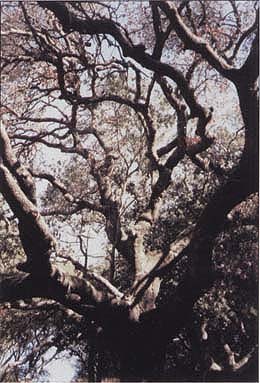All Issues
Letters
Publication Information
California Agriculture 55(3):4-4.
Published May 01, 2001
PDF | Citation | Permissions
Full text
SF water department uses SOD articles
Thank you for the transmittal of an electronic copy of the sudden oak death (SOD) articles in the Jan-Feb 2001 issue (p. 9–19). The San Francisco Water Department recently initiated self-imposed restrictions on the movement of oak products on the Peninsula Watershed in San Mateo County. Using the best available SOD science, we have also developed best management practices specific to our operational situation, for the disinfection of tools and equipment along with an SOD detection and inventory procedure.
Peninsula watershed forester Guido Ciardi utilized the California Agriculture articles in our SOD management and detection training program. The training is for our watershed keepers, operating engineers and laborer foreman. Additional participants included adjacent landowners such as the Filoli Estate and leaseholders on watershed lands.
Larry Costello of UC Cooperative Extension in San Mateo and San Francisco counties and Gary Slaughter from the UC Davis plant pathology department collaborated with us and reviewed the science. The information in the articles provided background and technical information that greatly enhanced the training program for our watershed protection and watershed operations staff.
John Fournet, Forester
Land and Resources Management Section
San Francisco Water Department
Bats, beetles and SOD
When I lived in Oregon I raised bats, and I am of the opinion that they made a great dent in the insect population. Perhaps if bats were placed around in the areas that are hit the worst with SOD, they could make a difference. I believe they would get to work on the bark beetles. Bat houses can be built very cheaply.
Alfred Hampson
San Francisco
Editor's note: Scientists are not yet certain how the Phytophthora algae/fungus that causes SOD is transmitted from tree to tree. Although bark beetles often appear on dead trees and hasten their demise, it is not clear that they are the primary vectors. For more information on the use of bats in pest management see California Agriculture, Jan-Feb 1998.
Eucalyptus “pests”?
In some ways the arrival of eucalyptus pests (Nov-Dec 2000, p. 8) has improved the quality of the experience of living with eucalyptus trees. I have lived in a grove of mature trees for more than 20 years. When I moved here the trees grew so fast that they were unstable and large limbs broke off every year. The leaf mass was so dense that it blocked all light. There were few if any birds or small animals that lived in or traversed the trees. Since the arrival of the “pests,” the trees are more open and attractive, grass grows on the hillside under the canopy and birds come to feed. I feel that the trees have reached a new environmental balance that makes them less an invasive exotic weed and more a part of the community.
Charles Franklin
Los Angeles





